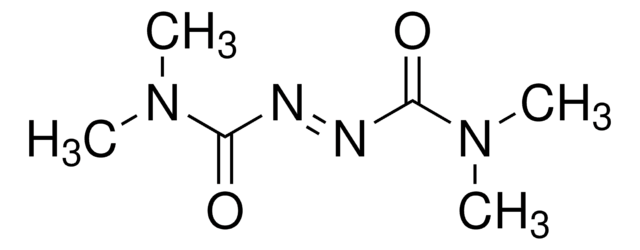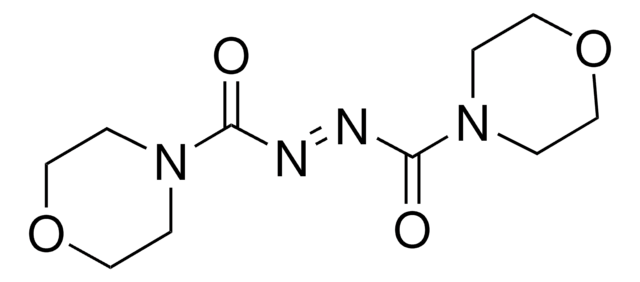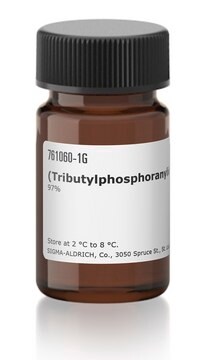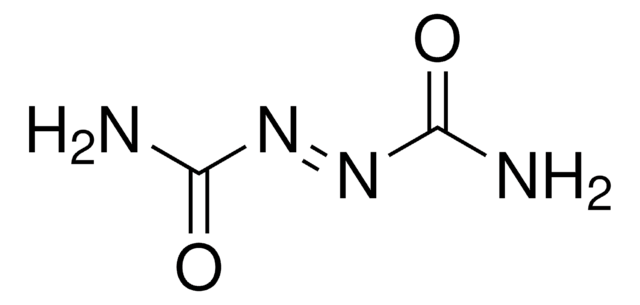Wichtige Dokumente
255920
1,1′-(Azodicarbonyl)dipiperidin
99%
Synonym(e):
ADD, Azodicarbonsäure-dipiperidid
About This Item
Empfohlene Produkte
Qualitätsniveau
Assay
99%
Form
solid
mp (Schmelzpunkt)
134-136 °C (lit.)
Funktionelle Gruppe
azo
SMILES String
O=C(\N=N\C(=O)N1CCCCC1)N2CCCCC2
InChI
1S/C12H20N4O2/c17-11(15-7-3-1-4-8-15)13-14-12(18)16-9-5-2-6-10-16/h1-10H2/b14-13+
InChIKey
OQJBFFCUFALWQL-BUHFOSPRSA-N
Anwendung
- Polyfluoroalkylated tripyrazolylmethane ligands
- (-)-Hygromycin A via Mitsunobu glycosylation
- Optically active α,α-disubstituted amino acids via Mitsunobu reaction
- Aza-β-lactams through [2+2] cycloaddition reactions
- Glycosyl disulfides
- Pyridine ether PPAR agonists
- S-glycosyl amino acid building blocks for combinatorial neoglycopeptide synthesis
- Histamine H3 receptor antagonists
Reactant for:
- Mitsunobu inversion reactions
Signalwort
Warning
H-Sätze
Gefahreneinstufungen
Eye Irrit. 2 - Skin Irrit. 2 - STOT SE 3
Zielorgane
Respiratory system
Lagerklassenschlüssel
11 - Combustible Solids
WGK
WGK 3
Flammpunkt (°F)
Not applicable
Flammpunkt (°C)
Not applicable
Persönliche Schutzausrüstung
dust mask type N95 (US), Eyeshields, Gloves
Hier finden Sie alle aktuellen Versionen:
Besitzen Sie dieses Produkt bereits?
In der Dokumentenbibliothek finden Sie die Dokumentation zu den Produkten, die Sie kürzlich erworben haben.
Kunden haben sich ebenfalls angesehen
Artikel
One of the most powerful and widely used carboncarbon bond forming reactions in organic synthesis is the Mitsunobu reaction.
Unser Team von Wissenschaftlern verfügt über Erfahrung in allen Forschungsbereichen einschließlich Life Science, Materialwissenschaften, chemischer Synthese, Chromatographie, Analytik und vielen mehr..
Setzen Sie sich mit dem technischen Dienst in Verbindung.








